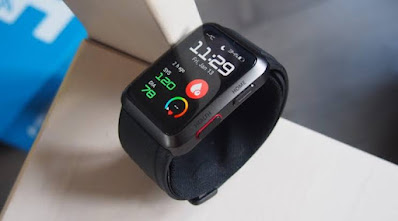It appears that a new blood pressure monitor made by Huawei has received medical clearance in China. The anticipated smartwatch will be the replacement for the 2021-released Watch D. Additionally, additional features of the wearable are disclosed by an entry in the IMDA database using the same model numbers.
It looks like China has granted medical certification to the Huawei Watch D2. There have long been rumors about this wearable, which is thought to be the Watch D's replacement, which debuted in 2021. A screenshot from the National Medical Products Administration database connected to this device has now been uploaded on Weibo by user @UncleKanshan.
Model numbers LCA-B10, LCA-B11, and LCA-B12 for a Huawei blood pressure measuring device are noted here, which could be the Huawei Watch D2. The database record also discloses that, similar to the Watch D, this smartwatch features an integrated airbag in the bracelet, akin to a cuff. Additionally, it states that the wearable may measure pulse rate, diastolic blood pressure, and systolic blood pressure "at a single time or at different time periods set within 24 hours."
The Infocomm Media Development Authority (IMDA) database in Singapore also has a watch with these model numbers. It is listed as a “Sports Activity Tracker” and has features like Bluetooth and a notification display. The pricing and release date of the Huawei Watch D2 wearable are still unknown, but the older Huawei Watch D, which retails for €339.99, gives an idea of what the smartwatch might cost should it make its way to Europe.





.jpeg)













